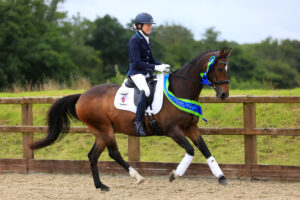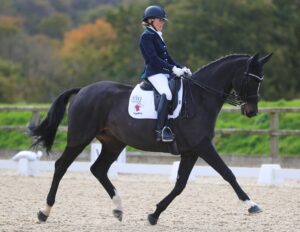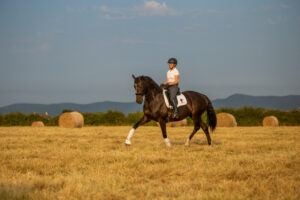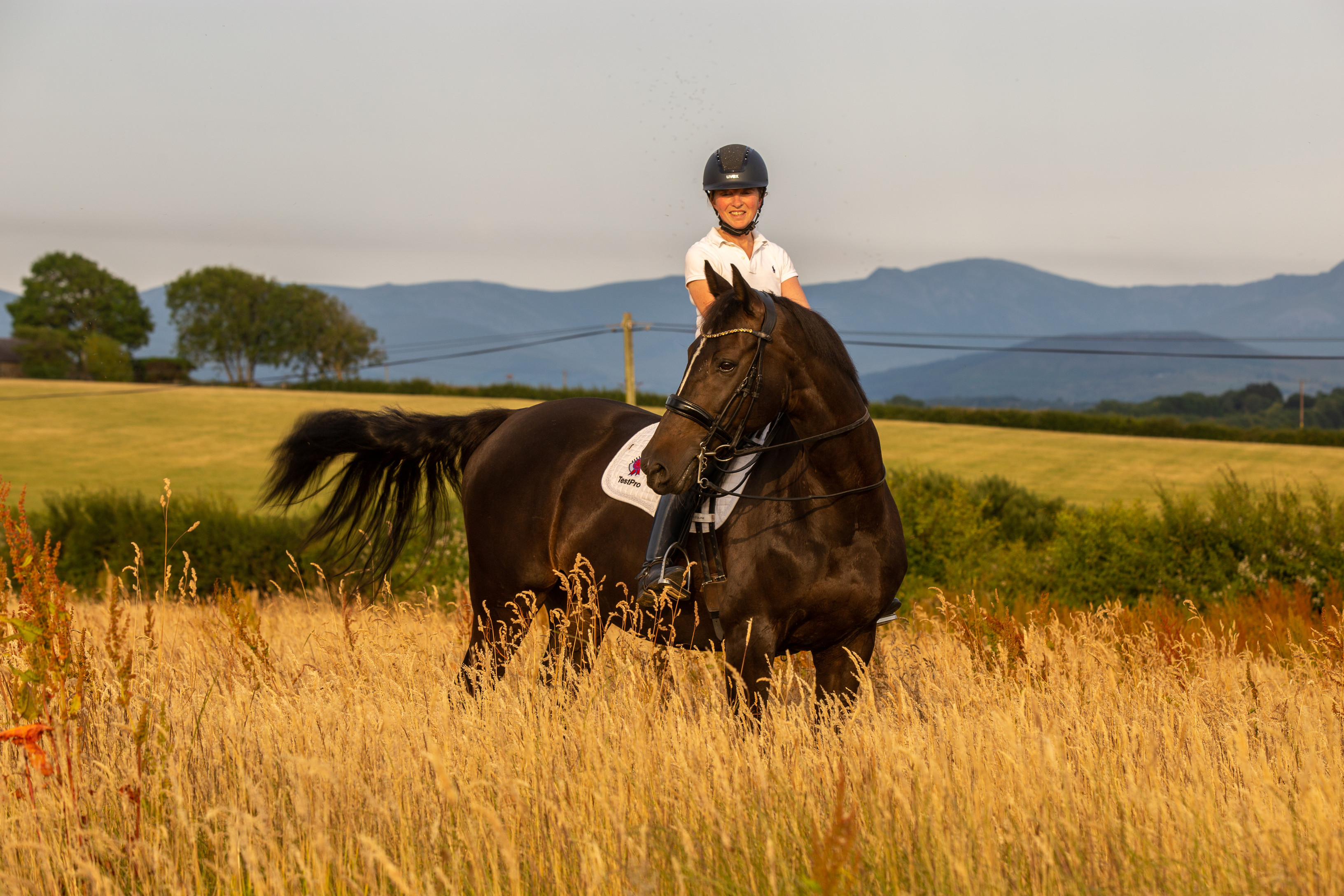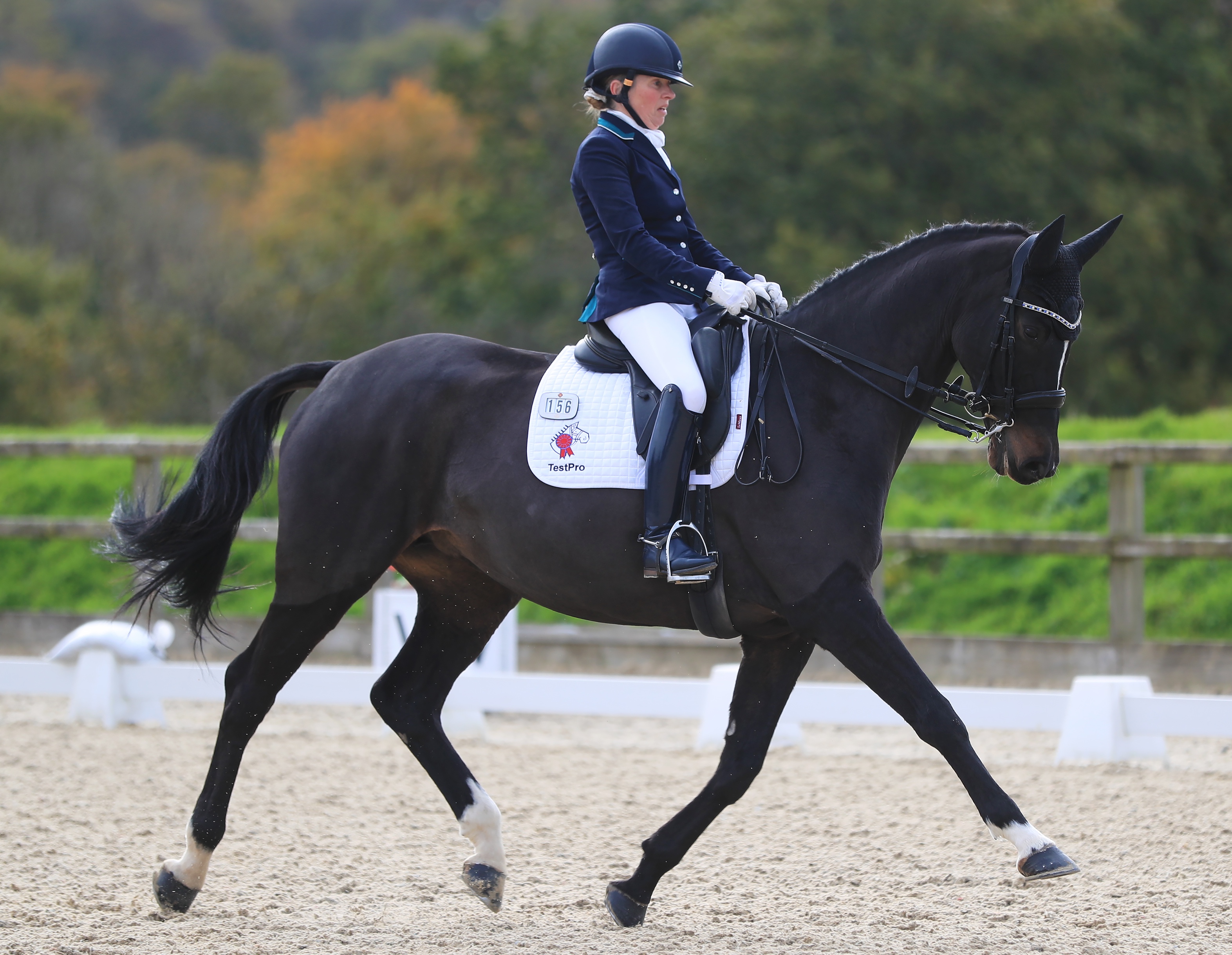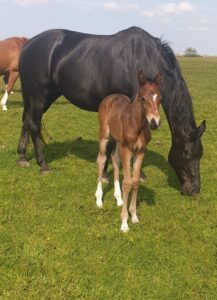Circles – A Judge’s Thoughts
August 19th, 2025 Posted by James Training, Uncategorized 0 thoughts on “Circles – A Judge’s Thoughts”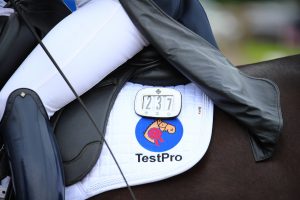
Some thoughts from sponsored rider Sara Jane Lanning after judging at a number of Area Festivals recently.
Circles what do we want to see? Well obviously the most important thing is way of going, adhering to the scales of training. So that’s correct rhythm with appropriate tempo. Then we are looking for suppleness, that’s both suppleness over the back i.e. longitudinal suppleness and also that correct bend i.e. lateral suppleness is shown.
Then the horses have to be through to a steady elastic contact working nicely forwards from behind. They have to stay correctly aligned around the circle i.e. hind legs stepping into the footprints of the front legs without quarters coming in or without quarters swinging out.
As you progress up the levels then collection is required but at prelim and novice level when riding a 20 m circle it’s working trot and working canter.
For me as a judge the most frustrating thing is when you see a horse going correctly, following those scales of training but a rider inaccurately and incorrectly rides a circle.
It goes without saying that a circle should be round with no corners or straight bits. There should be a difference between the circle and its preceding corner and the corner afterwords. No squares, no diamonds! I put something in the middle of the corner to make my riders come inside on a circle and outside when going large.
Circles need to be the correct size whether that’s 10m, 15m or 20m, and for me the one most often ridden incorrectly is the one that should be the most straightforward, the 20 m circle.
When I’m teaching I often ask my riders how many metres is it from the corner of the arena to the corner marker, and then how many metres in a long arena to the next marker so for example how many metres from the corner to H and then how many metres from H to S? I’m often met with a blank stare and a look of bewilderment about why I’m asking a maths question in our lesson. For me it’s simple, if you don’t know how many metres there are between the markers how on earth are you going to ride a correct circle?
As a trainer if I just tell a rider the circle should go to a certain spot in the arena, by the time they’ve got home fed the horse had their tea and come out the next day (or week !) to practice they’re going to have forgotten where they need to go to, but if they understand how many metres there are between the markers they can work it out even if they have forgotten!
If the 20m circle is at C many riders ride through the SR line or the VP line. That line is in fact only 18m from the end of the arena so they end up with a squished circle. Those same riders will very often ride through the same line when a 20m circle is from E or B. Now in this instance the circle will be too big and it will be a 24 meter egg! The judge at E or B will see this clearly while those on the short side cannot be sure so you will probably get away with these inaccuracies at a normal show with only one judge.
As a judge you will be deducting marks when these are ridden incorrectly from your base mark of the quality of the trot or the canter and when you’re at regionals, area festivals and championship classes, the scores are usually so close so you really don’t want to be giving away easy marks like these. It can make a huge impact and the difference between first or second or losing that qualifying spot, so next time you’re in a long arena have a look at where those markers are and practice your 20m circles. You might just thank me for it!
Have a look on correctly drawn scale diagrams like those on the Dressage Test Pro Apps to see where they should go. In my opinion the most useful tool out there for riders. You can even overlay the arena with a grid to help you visualise. Happy circling!

